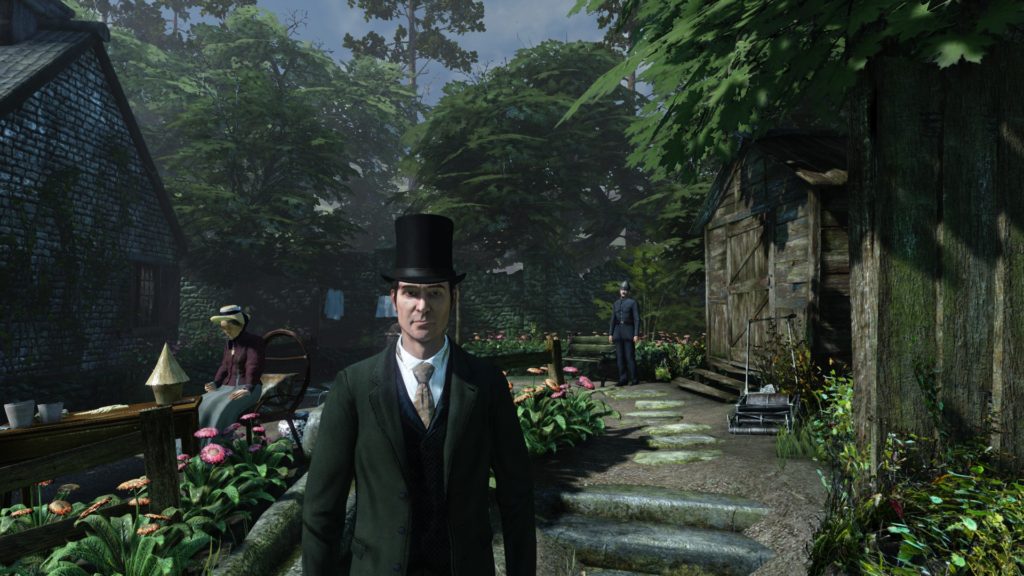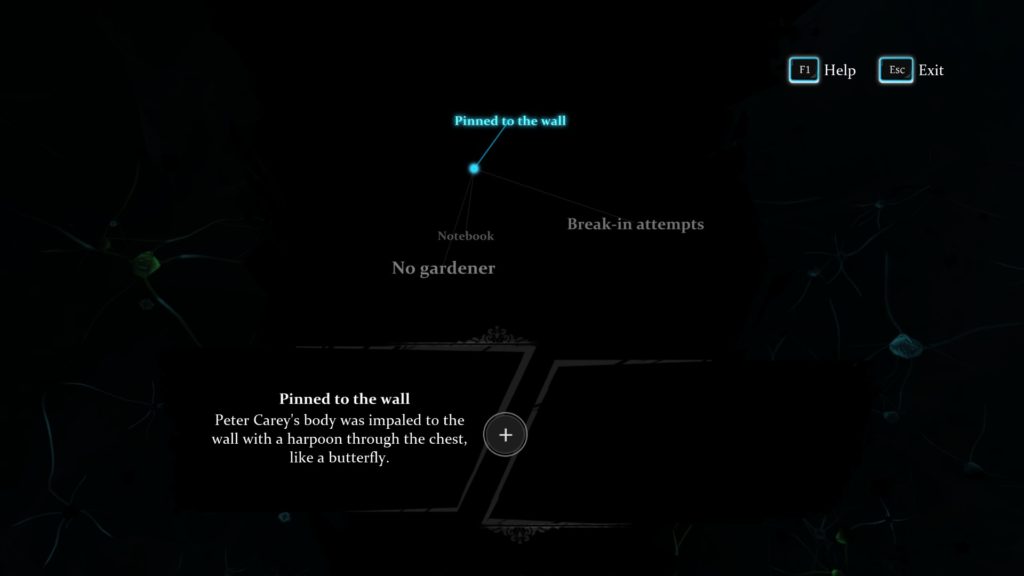“So which one should it be?”
“Argh. All right, do we agree on they wanting to set up a trap in the first place?”
“Let’s say we are.”
“If that’s the case, it’s either the lake, or the mine. Right?”
“Right. Let’s say it’s the lake. So they would steal the rails from the shed, with the large whatever, vehicle, transport it to the beach, where they would… put it on a boat and then cross the quuarry and then build a rail so it can be lead to the lake but why and how?”
“Wait, don’t we think the rails were already there?”
“Well, they are definitely not there now.”
“When did the quarry get flooded? Was that recently?”
“The guy said it wasn’t. Wasn’t it months ago?”
“Yes, but they bribed him, didn’t they? So it could be anything.”
“For it to be the lake, the drunk guy had to say the truth, so the train did pass that station. Which could happen, but then why is he even there.”
“The mine would fit much better. There were some explosives left there. Plus it would be very thematic.”
“But the vehicle there was much smaller.”
“So? They could have used two different ones.”
“Plus I really don’t understand this whole get the rails from somewhere, transport it, then go through that with the train, and then take it all back like nothing happened.”
“What I really don’t understand is why did they bother with this stupid fake train? Didn’t they pay off whatshisface, and the other was drunk?”
“I guess the reason was to confuse us. Are you confused?”
“Well, yes.”
“So that’s why.”
“Please don’t say elementary.”
“…”
“…”
“Elementary.”
“…”
Crimes & Punishment is the sixth installment in Frogwares’ loosely linked Sherlock Holmes series. You control the titular detective, point and click adventure your way through the six cases, find the correct culprit (or don’t), and make the correct moral choice regarding their punishment (or don’t).
This game is a bit of an unorthodox choice to review for our co-operative focused encyclopedia. However, I felt like we were truly co-operating by constantly discussing the new clues and the possible conclusions, while only one of us were controlling the game. The pace is really slow, there are only a few quick time events, it’s very straight-lined, so it was not annoying to watch someone else play at all, and, similarly, it did not feel like a privilege to control the game. So as far as I’m concerned, we were playing a co-operative game.

With that being out of the way, let’s see the gameplay. The story is broken into six different cases, each taking 2 to 4 hours to solve. You control a strangely moderny version of Sherlock, everyone’s favorite sociopathic detective, and, spoiler alert, occasionally a dog. In every case, there are a couple of areas you need to explore, click on everything, use your super-vision to find new stuff hitherto unclicked upon to click on, talk to people, and click on their various body parts to gather clues about their personality and history. After a sufficient amount of time, time of clicking on things has passed, you go to your inner deduction palace, where you connect the dots (literally), draw the conclusions, connect those conclusions as well, and then tell the world who the bad guy is.
The Good
This all sounded really pre-shaped and linear… and it is… the game is extremely easy to finish, because it’s always very clear where to go, and if not, you just click on everything. Finishing the game correctly, however, and understanding the details of each case, now that is a bit more challenging! In a weird twist, you can actually accuse an innocent person, and since you are the famous detective, well, everyone will just take your word for it. The game never actually tells you if you got it right or wrong, not even when you finished the whole thing. It does imply, and you kinda feel if you messed one up – it happened to us in one case – by providing you with the news coverage of the outcome of the case. And after that, you have to live with your decisions in your virtual life, which makes you oddly motivated to be extra careful in the next case. Overall, interesting game design element.
Another unique mechanism is the aforementioned deduction palace. As you progress, you make mental notes of the main observations you make.

Then you connect these observations which make thought bubbles, which you can further connect with each other, see which ones contradict each other, until you reach the mother of all thought bubbles. It sounds silly, but it actually looks cool in the game (can’t show a picture of that for spoiler reasons), and works surprisingly well. I for one felt really smart, I’m not ashamed to admit. And once again, the conclusions are not clear cut, at least not initially, and then you have the pleasure of watching the deductions shape based on new information that you uncover.
The setting is cute and silly, the game is very light-hearted. Everything is a bit like a caricature, we found Watson to be the most amusing. I get that he is supposed to be an everyday man and look dumb next to the genius protagonist, but he was simply objectively dumb. Now that I think of it it’s weird that I’m mentioning Watson at all, but he was really memorable and the first picture that I think of when I think of the game is Sherlock reading Crime and Punishment in the carriage (god, he is either a very slow or a very meticulous reader!) and Watson looking out the window like a cute little pet. It didn’t help that his repeating NPC dialogue was usually about how he does not understand something. We loved him. And then there’s the bits when you control the cute dog. It’s everything you have ever dreamed of!
The Bad
Since I ended the good stuff with a really subjective point, let me start the bad stuff with one as well. The costumes. There are costumes in the game, many of them. Hats, beards, sailor clothes, soldier clothes. They are stored in your closet. And some of them are locked. I don’t know how you can unlock them or why you would do that, I suspect you have to beat the game to unlock, but why anyone would play this game twice just blows my mind. Or why anyone bothered to design them in the first place.
OK, on for the serious ones now. The game feels a bit cheap. Set pieces are really small, the game takes place in very limited areas, and I couldn’t help but feel claustrophobic. There are some other mild but very visible budget cuttings, like the same model being used for different characters with a slightly different haircut.

The game also gets somewhat repetitive. Of course, it’s interesting finding details on the models and then see as the game draws complicated conclusions, but it’s an unskippable part, and you have to do it with every poor soul you come across. Frantically clicking on their body parts until the game recognizes any of the clicks as important ones. There are also some very streamlined “puzzles” in the game, and by streamlined, I mean there are 5 objects in a room, and you have to click on them in a given order (but if you mess up, that doesn’t matter either), and you know what the outcome will be, you still have to watch the animation. You are very often simply going through the motions through your journey, which a clever reference to the work of a real-life detective may be, but an enjoyable feature in a game makes it not.
And finally, this might just be me, but Crimes and Punishments is a weird title for a game that is, and always been about catching criminal(s). It’s not like there is any clever psychological angle to the nature of guilt either. Unless it is extremely meta and the crime part is the wrongful accusation that I mentioned earlier and our punishment was the bad feeling after, but I highly doubt this crossed any of the developers’ mind.
The Co-Op
Well, read the intro, the co-op is basically like that. You have heated discussions about the possible outcome, try to piece the pieces together, you bounce ideas off of each other, it’s great. Reminds me of the Sherlock board games. (There’s even a part where you have to read newspapers from your archive!)
There is obviously no asymmetry or helping each other out or working together in the traditional sense. Of course it would not be fair to judge the game based on that, let’s just say the co-operative element is surprisingly high considering it’s a single player game…
The Recommendation
This is a tough one… We had a blast playing the game, it was pure entertainment for us. But we were playing in a very good mood, and even the numerous mistakes and oddities resonated well with us. Crimes and Punishments has some clever game design elements I haven’t seen before, but it’s also very repetitive, and very easy. Possibly boring to a lot of people. So I would definitely recommend thinking about whether this game is for you or not, and then playing it if you think it is. That’s my best offer.
Info
| Release Year | 2014 |
| Genre | Point & Click Adventure |
| Difficulty | Very Easy |
| Number of Players | 1 to 1 |
| Length | 10-20 hours |
Rating
| Overall | Good |
| Story | Mediocre |
| Co-Operation | Good |